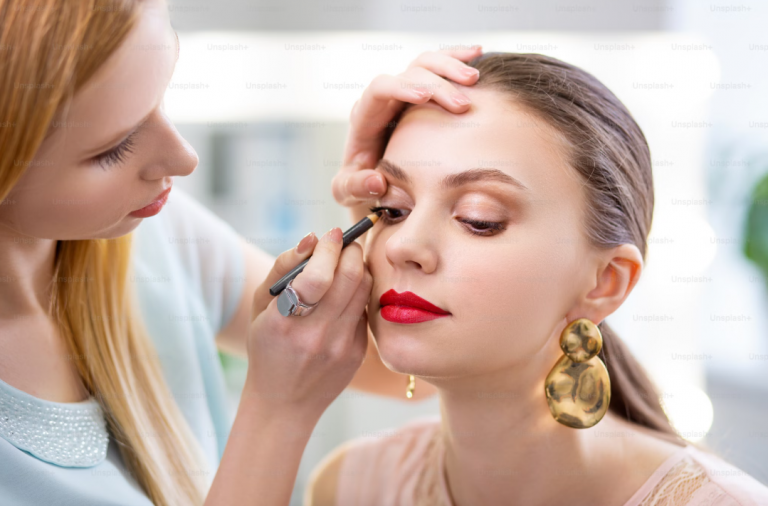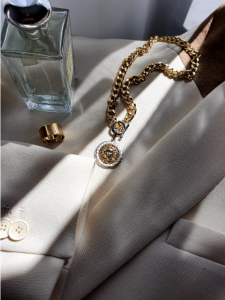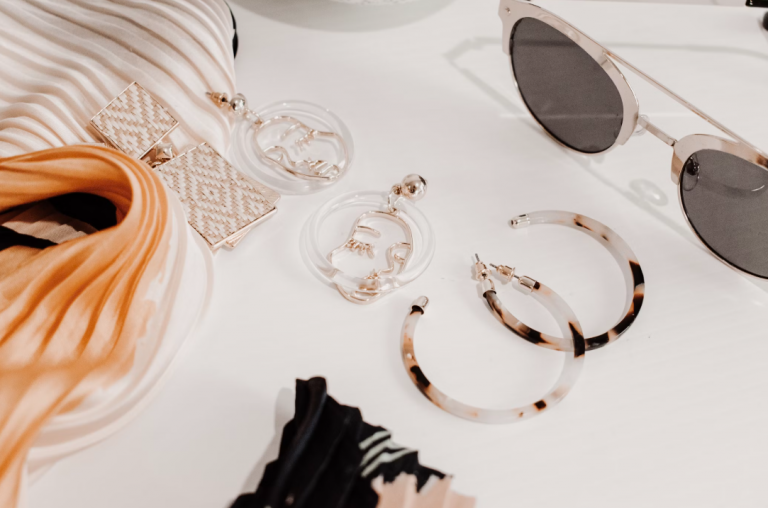Introduction
We’ve all been there: standing in a fitting room, trying on pair after pair of jeans, only to walk away frustrated because nothing seems to fit quite right. Whether it’s the waist that’s too tight, the thighs that are too loose, or the inseam that’s all wrong, jean shopping can sometimes feel like an overwhelming task. But don’t worry! With the right knowledge and approach, you can find jeans that not only look great but feel fantastic, too. Let’s dive into how you can shop smartly for your next perfect pair of jeans.
Know Your Body Shape
One of the most important steps when shopping for jeans is understanding your body shape. Different cuts and fits work best for different shapes, so knowing your body type will make the search for the perfect pair much easier.
The Different Body Shapes
- Apple Shape
If you carry weight around your midsection and have slimmer arms and legs, you’re likely an apple shape. Look for jeans that balance your proportions, such as high-rise jeans with a straight or bootcut leg. - Pear Shape
If your hips and thighs are wider than your waist, you’re likely a pear shape. Bootcut or flare jeans can help balance out your proportions, and choosing a high-rise jean can accentuate your waist. - Hourglass Shape
If your waist is smaller than your hips and bust, you have an hourglass shape. High-waisted jeans that hug your curves are a great option, as they highlight your natural shape. - Straight Shape
If your body is more of a rectangle shape, with similar measurements for your bust, waist, and hips, you can wear just about any jean style. Try high-rise skinny or boyfriend jeans to create shape and definition.
How to Choose Jeans for Each Body Shape
Once you know your body shape, selecting the right pair of jeans becomes much easier. Consider the tips above and try on various fits to see what makes you feel the most comfortable and confident.
Understand Different Jean Fits
Jean fit refers to the overall silhouette of the jeans, and it’s a crucial factor in determining how the jeans will look on your body.
- Skinny Jeans
These jeans are form-fitting from the waist down to the ankle. They’re a great choice for showing off your legs and creating a sleek silhouette. - Straight-Leg Jeans
Straight-leg jeans have a consistent width from the hip to the hem, making them a more relaxed option than skinny jeans. - Bootcut Jeans
Bootcut jeans flare slightly from the knee down to the hem, giving you a more balanced appearance if you have wider hips or thighs. - Wide-Leg Jeans
These jeans have a loose fit throughout, providing comfort and a more relaxed look. They’re perfect for those who prefer a looser, airier feel. - Flare Jeans
Flare jeans are similar to bootcut jeans but with a wider flare from the knee down. They were popular in the ’70s and are making a comeback in modern fashion. - Boyfriend Jeans
Boyfriend jeans offer a relaxed, slouchy fit that’s perfect for a casual, laid-back look. They’re typically baggier through the thighs and hips. - High-Rise vs. Low-Rise Jeans
High-rise jeans sit above your belly button and accentuate the waist, while low-rise jeans sit below the hips, giving you a more relaxed, casual look.

The Fabric Matters
When it comes to jeans, fabric plays a significant role in how they fit and feel.
Denim Types (Rigid, Stretch, and Super Stretch)
- Rigid Denim
Has little to no stretch, making it more durable but less forgiving on the body. - Stretch Denim
Contains a small percentage of spandex or elastane, providing more flexibility and comfort. - Super Stretch Denim
Offers the most flexibility, conforming closely to the body.
The Role of Fabric Blend in Comfort
The blend of cotton, polyester, and spandex in denim influences how the jeans feel and how they stretch with your body. If comfort is a priority, look for a fabric with a higher percentage of stretch.
Focus on the Right Waist and Rise
The waist and rise of your jeans are crucial for achieving a comfortable fit.
- High Rise
High-rise jeans sit at or above your belly button. They’re great for elongating the legs and creating a more defined waistline. - Mid Rise
Mid-rise jeans sit between the hips and the belly button, offering a comfortable fit for most body types. - Low Rise
Low-rise jeans sit below the waist, offering a more casual, relaxed look but may not provide as much support for your midsection.
What’s Best for You?
Experiment with different rises to see which one feels most comfortable and flattering on your body.
Pay Attention to the Fit Around the Thighs and Hips
A key consideration when choosing jeans is how they fit around your thighs and hips. You don’t want them to be too tight, but you also don’t want them to be too baggy.
How to Choose the Right Fit for Your Thighs
If you have fuller thighs, opt for jeans with more room in the thigh area, such as straight-leg or bootcut styles. If you have slimmer thighs, skinny jeans or high-rise jeans can accentuate your figure.
Adjustments for the Perfect Hip Fit
For a great fit around your hips, ensure the jeans sit comfortably without gaping at the waist. A little stretch can help the jeans mold to your shape better.
Consider the Length and Inseam
The right length is essential for creating a polished, flattering look.
How to Measure Your Inseam
The inseam is the measurement from the crotch to the bottom of the hem. To get the most accurate inseam length, stand up straight and measure from your crotch down to where you want the hem to fall—whether it’s ankle-length or slightly cropped.
How to Decide the Right Length for Your Jeans
Make sure the jeans hit at the right spot, whether you prefer them slightly above the ankle, right at the ankle, or pooling at the feet for a more relaxed look. Always try jeans on and walk around to check the length in various positions.
Try Them On!
Even with all the right knowledge, the best way to ensure jeans fit is to try them on.
What to Look for While Trying Jeans On
- Comfort
The jeans should feel comfortable and not too tight around the waist or thighs. You should be able to move freely. - Movement
Sit down, squat, and walk around. Jeans that fit well won’t feel restrictive or ride up in awkward places. - How They Look from All Angles
Check yourself in the mirror from all angles. The jeans should flatter your shape and not have bulges, bunching, or gaping at the waist.
The Importance of Distressed and Wash Details
Jeans come in a variety of washes and distressing options. These details can affect how the jeans complement your overall style and outfit.
Choosing the Right Wash for Your Skin Tone
The wash of the jeans can make a significant difference in your look. Lighter washes tend to look more casual, while darker washes are more polished and versatile. Choose a wash that complements your skin tone for the best effect.
Distressed vs. Non-Distressed
Distressed jeans, with their frayed hems and ripped details, create a more relaxed, edgy look. Non-distressed jeans are more classic and versatile, ideal for both casual and slightly formal occasions.
The Right Fit Across Brands
Sizing and fit can vary across different brands. One brand’s “size 6” may fit completely differently from another’s.
Understanding Brand Sizing Differences
It’s important to know that sizing isn’t standardized across brands. If you find a pair of jeans you like, try them on or check the brand’s size chart to make sure you’re getting the right fit.
Finding Your Ideal Jean Brand
Once you discover a brand that works for your body type, stick with it. Familiarity with how that brand’s sizing works can save you a lot of trial and error.
Shopping for Jeans Online
Buying jeans online can be daunting, but with the right strategy, it’s totally manageable.
How to Buy Jeans Online with Confidence
- Check Size Charts
Always refer to the brand’s size chart before purchasing. Measure yourself at home and compare your measurements with the chart. - Read Reviews and Look for Photos
Customer reviews can be a lifesaver when buying jeans online. Look for reviews from people with similar body types to see how the jeans fit in real life. - Return Policies
Before purchasing, make sure the store has a solid return or exchange policy. That way, you can send them back if they don’t fit quite right.
Conclusion
Shopping for jeans doesn’t have to be a stressful experience. With these tips in mind, you’ll be well on your way to finding the perfect pair that flatters your body, feels great, and complements your personal style. Whether you’re looking for comfort, style, or a combination of both, there’s a perfect pair of jeans out there for you!












+ There are no comments
Add yours